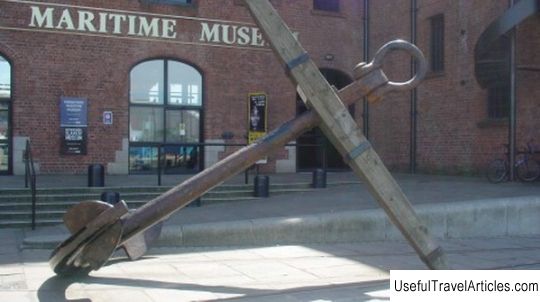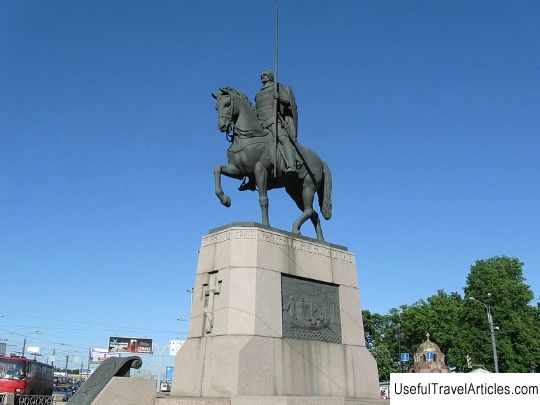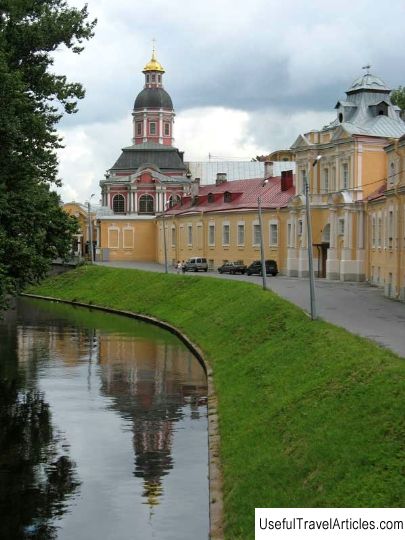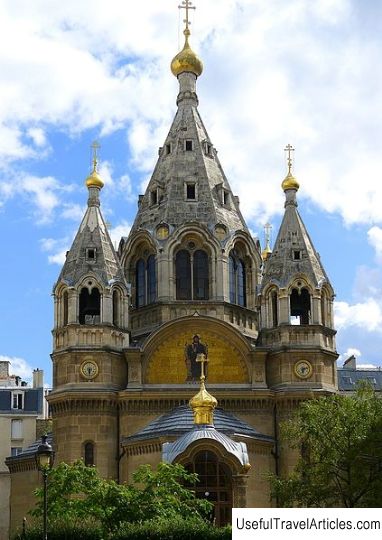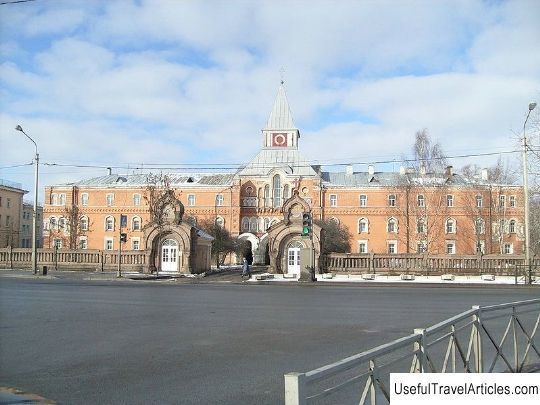Alexander Nevsky Lavra description and photos - Russia - Saint Petersburg: Saint Petersburg
Rating: 8,0/10 (7895 votes) 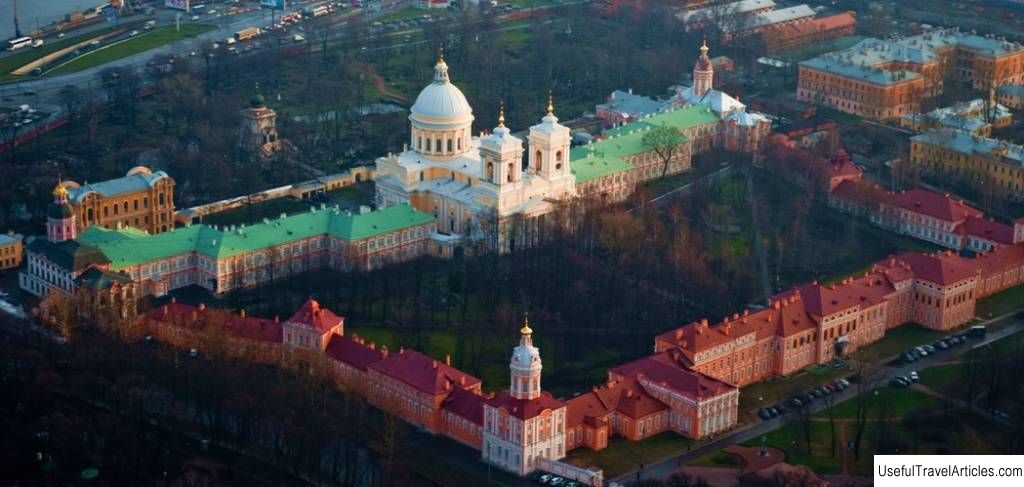
Alexander Nevsky Lavra description and photo - Russia - St. Petersburg: St. Petersburg. Detailed information about the attraction. Description, photos and a map showing the nearest significant objects. Photo and descriptionThe northern Russian capital is famous not only for its many tourist places and attractions, but also for revered shrines, famous Orthodox churches, many of which are monuments of history and architecture. One of these places, where both tourists and pilgrims flock every year, is the Alexander Nevsky Lavra. The history of this monastery begins in the 10s of the 18th century. It became the first monastery in the city. Currently, it is a complex of buildings (including necropolises) and is the largest monastery in the northern Russian capital. History of constructionThe decree on the construction of the monastery was issued by Peter the Great . The future monastery was allocated a large area - five thousand square fathoms. It was built exactly on the spot where in the 13th century Alexander Nevsky defeated the Swedish army. Moreover, the monastery was erected during the Northern War - that is, when Russia was again at war with Sweden. In the early 10s of the 18th century, Annunciation Church . It was built of wood. The date of its consecration is considered the beginning of the history of the Lavra. Creation of a project of an architectural ensemble the monastery was led by Domenico Andrea Trezzini. The new monastery was to become not only a harmonious architectural ensemble, but also an outpost on the border of the city. At the walls of the monastery under construction, a whole settlement spontaneously formed. There, servants and workers lived in wooden houses. They grew fruit in the garden and vegetables in the garden beds. It was a real town with a smithy, a mill, a carpentry workshop and stockyards. In the 1920s, a school was opened on the monastery territory . The children of the clergy studied there. Six years later, it was transformed into a seminary, and in the 1890s it was given a new status: the seminary turned into an academy. Around the same time when the school was opened, a printing house began to function at the monastery. A few years earlier, a charitable institution was opened under him to support retired soldiers. In the first half of the 1820s, the relics of the legendary Prince Alexander , which had previously been in one of the Vladimir monasteries, were solemnly transferred to the monastery. Meanwhile, construction work proceeded extremely slowly. Years passed, and it was still far from the end of construction. One of the reasons was that the project was large enough (for the 18th century). In addition, difficulties arose that impeded the progress of construction work. Both under Elizaveta Petrovna and under Catherine II construction was still going on. For a number of reasons, the cathedral building had to be dismantled. Ivan Starov has developed a new project of this temple. Around the same time, a square appeared in front of the entrance to the monastery. At that time, the staff of the Lavra consisted of the governor, confessor, sacristan, dean, housekeeper, ordinator, thirty hieromonks, eighteen hierodeacons, twenty-four monks and twenty hospitalized ones. Lavra was one of the richest monasteries in the country. She possessed a very impressive capital (three million rubles) and vast land (more than thirteen thousand dessiatines). Lavra in the XX century At the beginning of the 20th century, a museum was opened under the Lavra . Around the same period, courses for singers appeared in it. During wartime, some of the monastery premises were used as an infirmary. At the beginning of the 20th century, the monastery was still very rich. In the pre-revolutionary period, his capital was approximately two million rubles. Most of this amount was in interest-bearing securities, and there was relatively little cash. At that time, fifty novices and sixty-three monastics lived in the monastery. In the post-revolutionary period, abuses committed by the leadership of the Lavra were revealed. The leader was relieved of his post and replaced by another. A month after these events, representatives of the Soviet government made an attempt to requisition all the capital of the Lavra , it was decided to use the monastery premises as shelters and almshouses. But this attempt was unsuccessful. When it turned out that the matter was not limited to requisition, and the arrests of the clergy are also being made, a bell ringing was heard over the lavra: someone began to sound the alarm. The townspeople came running to the monastery from all sides. They disarmed the representatives of the new government. One of the clergymen was mortally wounded, which shocked the townspeople and caused them extreme indignation. The "requisites" had to urgently leave the walls of the lavra. This was the first clash between the Orthodox Church and the new authorities in the country. It ended with the victory of the church, but it should be noted that this was its only major victory for the entire period of Soviet rule. The monastery was closed in the early 30s of the XX century . At the same time, all the monastics of the Lavra were arrested. Ten years earlier, a shrine with the relics of Prince Alexander was removed from the monastery. The holy relics were taken out of it and transferred to one of the city's museums. The shrine, in which they were kept, was transferred to another St. Petersburg museum. After the closure of the Lavra, its churches functioned for some time as parish ones, but soon the services in them stopped. Now the premises of the former lavra were occupied by workshops and various government agencies. In particular, part of the territory of the former monastery was transferred to the flying club, the other part was used as a vegetable store, hostels were located here ... In the late 1950s, divine services were resumed in the cathedral. In the 80s the relics of the legendary prince were returned here from the museum . In the mid-90s, the monastery began to revive. The adoption of a new monastery charter took place. The main officials were appointed: confessor, housekeeper, sacristan, dean, secretary and treasurer. Currently, there is a icon painting workshop on the territory of the Lavra. The leadership of the monastery supports traditional crafts: jewelers, cabinetmakers, and tin miniature craftsmen work here. The pilgrimage service plays an important role in the life of the Lavra. Relatively recently the dome of the cathedral was restored , a fourteen-meter cross was covered with gilding. Structures of the architectural complex Let's talk about some of the structures that make up the architectural complex of Lavra: - The cathedral church of the monastery is the majestic Trinity Cathedral . The building was built at the end of the 18th century. The project was developed by Leonard Theodor Schwertfeger. Initially, the temple was single-domed, with two bell towers towered over it. Preparations for construction were carried out at the beginning of the 18th century; in the 1920s, the building was laid. By the beginning of the 30s, the main construction work had already been completed, but ... it turned out that serious mistakes were made in the project. The vaults of the building were cracked. The construction had to be interrupted. For several years the building stood unfinished, in the 40s it was decided to dismantle it. In the 50s of the 18th century, the temple was finally dismantled. Ten years later, it was decided to develop a new project for the cathedral. A competition was announced, in which famous architects of the 18th century took part, but none of the projects presented was approved by the Russian authorities. Only in the 70s was the building project developed by Ivan Starov approved. Construction began. It lasted for about fourteen years. In the 90s of the 18th century, the building was consecrated. - On the territory of the monastery there is the oldest temple in the city - Annunciation Church . It was built at the beginning of the 18th century. Diplomats, several famous generals and statesmen are buried in its fence, and members of the imperial family found their rest here. The temple is located in the northeastern part of the monastery. During the Soviet period, the building was used as a museum. - One of the most interesting sights on the territory of the Lavra is Lazarevskoye Cemetery . It is a necropolis museum. At this cemetery (the oldest in the northern Russian capital) burials are not currently taking place. It is open for inspection: townspeople and guests of the city come here. - Not far from the above-described necropolis there is another one - Tikhvin cemetery . Fyodor Dostoevsky, Ivan Krylov, Vasily Zhukovsky, Modest Mussorgsky and many other outstanding cultural figures are buried here. On the territory of the necropolis there is the former building of the Tikhvin Church, which is currently a branch of one of the city museums. The history of this building began in the 60s of the 19th century. In the 30s of the XX century, the church, like many Russian churches, was closed. The interiors of the building were completely destroyed, and almost nothing remained of its facades. The building was later renovated.                   We also recommend reading Armenian Church of the Holy Resurrection description and photos - Bangladesh: Dhaka Topic: Alexander Nevsky Lavra description and photos - Russia - Saint Petersburg: Saint Petersburg. |
